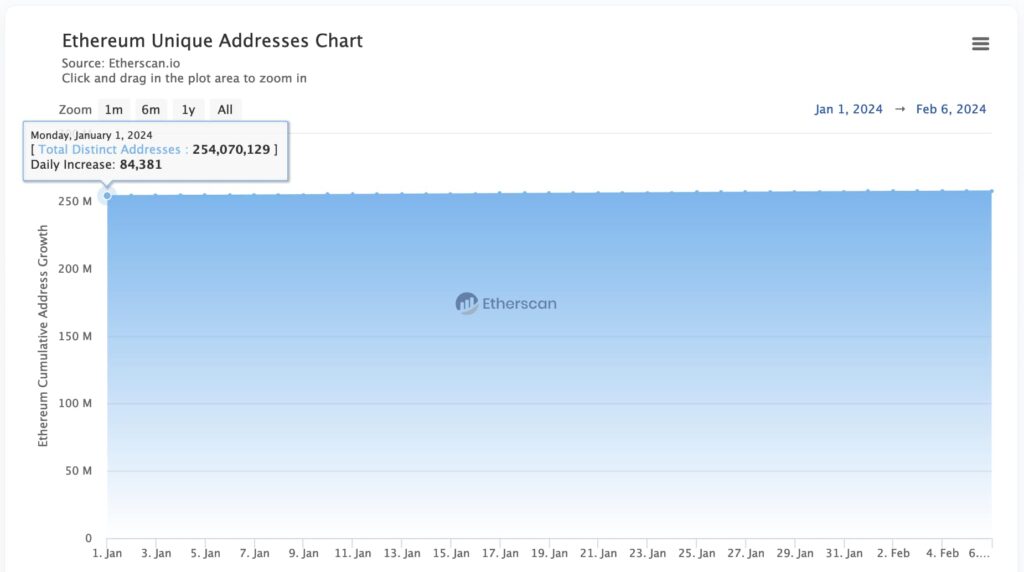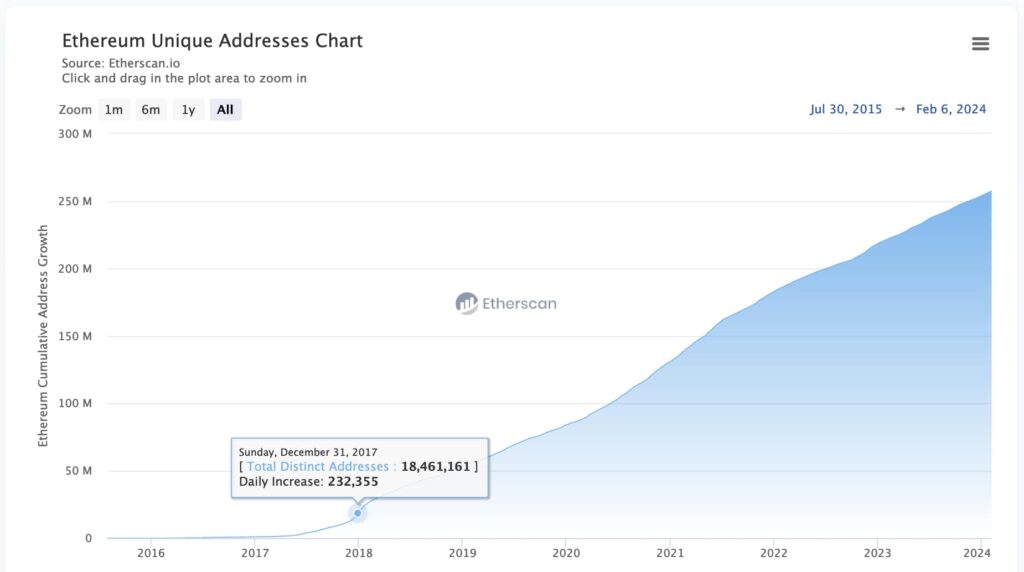Ethereum (ETH) has consistently grown in adoption, usage, and value over the years. It is the second-largest cryptocurrency by market cap and the leading Web3 and DeFi blockchain.
Interestingly, the number of unique addresses in the network is an insightful metric to look at and evidence this growth. For that, Finbold retrieved data from Etherscan on February 7, which shows nearly 257.60 million current unique addresses.
In particular, users created nearly 3.54 million new addresses in 2024, from 254.07 million registered on January 1. On average, 2024’s daily increase of Ethereum unique addresses was 95,570, adding 96,145 on February 6 alone.

However, it is important to understand that new unique addresses do not necessarily mean new users or active usage. One user can hold multiple addresses, which can go inactive over history.
Ethereum new unique addresses throughout history
Throughout its history, Ethereum has added over 82,000 daily unique addresses, on average, since July 30, 2015.
Notably, its real surge started in 2018 and has increased nearly 14 times until today, from less than 18.5 million unique addresses registered on December 31, 2017. This means an increase of 239.1 million addresses since January 1, 2018, or a daily average of 108,000.

The daily average since 2018 is higher than the averages since Ethereum’s mainnet launch in 2015 and 2024’s latest data. This highlights how expressive these past six years were for adoption but shows a recent decrease in addresses’ activation.
Current ETH’s price action could have influenced the unique address creation slow pace, following 2017’s and 2021’s bull markets.
Nevertheless, Ethereum thrives in relevant DeFi metrics, such as dominating over 50% of the total value locked (TVL) in all chains. Protocols built on top of ETH are their category leaders in TVL and decentralized exchanges (DEX) volume, like Uniswap (UNI).
Ethereum can continue growing while the network attracts investments, builders, and users. On the other hand, layer-1 competitors to Web3 and DeFi have been surging with technological advancements, higher scalability, and better user experience (UX).
Thus, the Ethereum ecosystem must learn to evolve and adapt in the highly competitive free market of cryptocurrencies.








